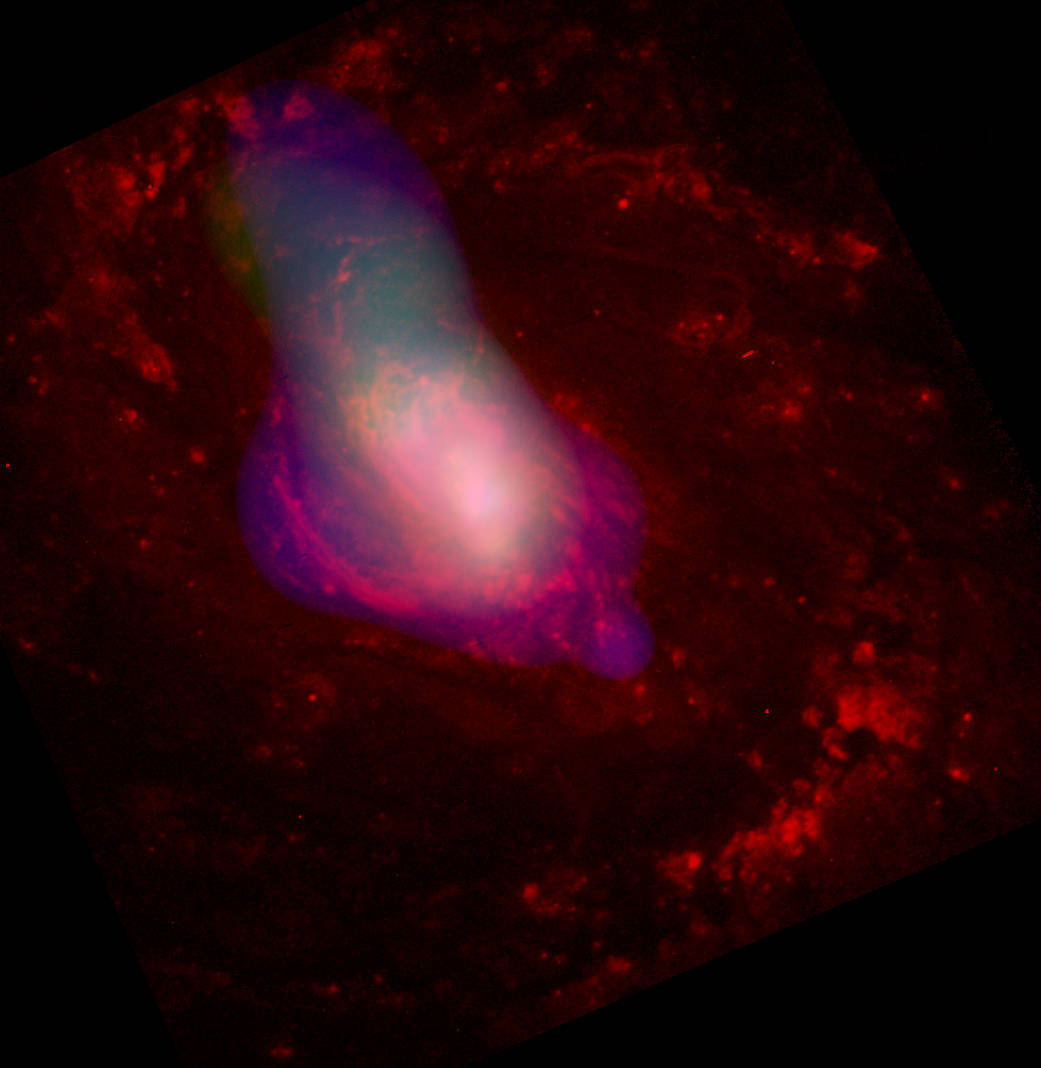This 2003 composite X-ray (blue and green) and optical (red) image of the active galaxy, NGC 1068, shows gas blowing away in a high-speed wind from the vicinity of a central supermassive black hole. Regions of intense star formation in the inner spiral arms of the galaxy are highlighted by both optical and X-ray emission.
The elongated shape of the gas cloud is thought to be due to the funneling effect of a torus, or doughnut-shaped cloud, of cool gas and dust that surrounds the black hole. The torus, which appears as the elongated white spot in the accompanying 3-color X-ray images, has a mass of about 5 million Suns. Radio observations indicate that the torus extends from within a few light years of the black hole out to about 300 light years.
The X-rays observed from the torus are scattered and reflected X-rays that are probably coming from a hidden disk of hot gas formed as matter swirls very near the black hole. The torus is one source of the gas in the high-speed wind, but the hidden disk may also be involved. X-ray heating of gas further out in the galaxy contributes to the slower, outer parts of the wind.
#TBT
Image Credit: X-ray: NASA/CXC/MIT/UCSB/P.Ogle et al.; Optical: NASA/STScI/A.Capetti et al.
这张2003年合成的活动星系NGC 1068的X射线(蓝色和绿色)和光学(红色)图像显示气体以高速风从中心特大质量黑洞附近吹走。在星系内旋臂的强烈恒星形成区域被光学和X射线发射突出显示。
气体云的拉长形状被认为是由于环绕在黑洞周围的冷气体和尘埃形成的圆环或甜甜圈状云的漏斗效应。在随附的3色X射线图像中,环面呈现为拉长的白点,其质量约为500万个太阳。无线电观测表明,该环面从黑洞的几光年范围内延伸到大约300光年。
从环面中观察到的X射线被散射和反射,这些X射线可能来自物质在黑洞附近旋转时形成的隐藏的热气盘。环面是高速风中的气体来源之一,但隐藏的圆盘也可能参与其中。星系中更远处气体的x射线加热导致了风的较慢的外部部分。
#TBT
影像来源:X-ray: NASA/CXC/MIT/UCSB/P.Ogle et al.; Optical: NASA/STScI/A.Capetti et al.



